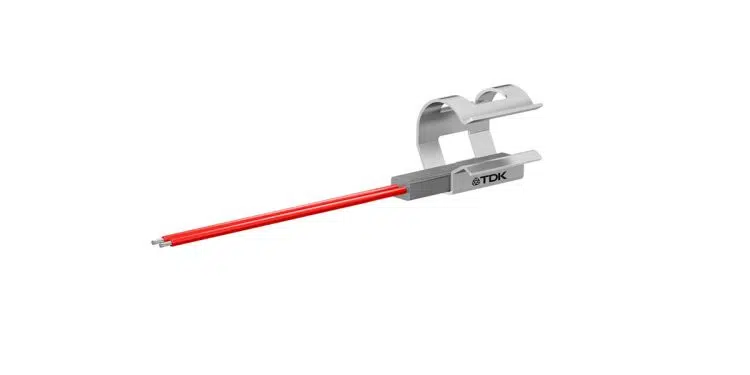TDK Corporation presents the new B58101A0109A* (HP100) series of NTC thermistor based heat pump sensors for measuring the refrigerant temperature indirectly via the pipes’ surface temperature.
The NTC thermistor based sensors are specifically designed to meet automotive requirements. Standard for pipe diameters of 12.8 mm, this clip-on design can operate in harsh environments from -40 °C to +150 °C and is water immersion resistant for up to 500 hours.
The response time is less than 7 s. The new AEC-Q200 qualified sensors offer a high dielectric strength of 1250 V AC for 10 s, an important criterion for use in EVs. A low temperature tolerance of ±0.3 K at a nominal temperature of 85 °C ensures high control accuracy.
Thanks to the clip-on technology, the sensor is very easy to mount. In addition, this technology does not require any entries into the cooling or refrigerant circuits, minimizing leakage risks.
Typical applications of the robust sensors are detecting the refrigerant temperature of heat pumps as part of the thermal management of high-voltage batteries for electric vehicles (BEV).
Features
- Easy mounting due to clip-on technology
- Minimization of leakage risks due to surface temperature measurement
- High control accuracy due to low temperature tolerance of ±0.3 K at a nominal temperature of 85 °C
- High dielectric strength of 1250 V AC for 10 s
- Response time is less than 7 s
- Submersible in water for up to 500 hours
Applications
- Temperature measurement of coolants and refrigerants on heat pump tubes in BEVs































